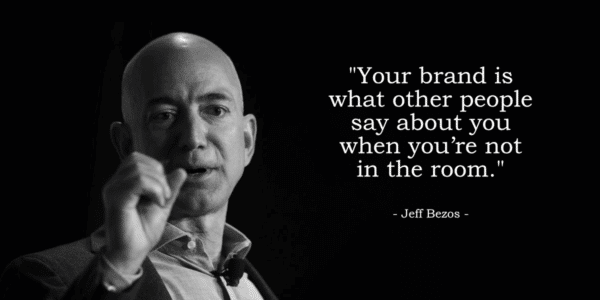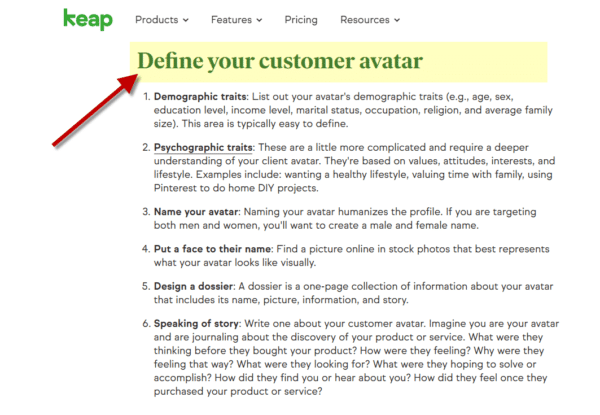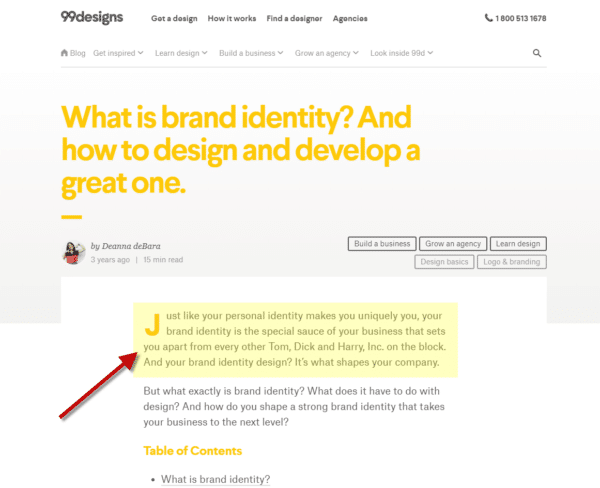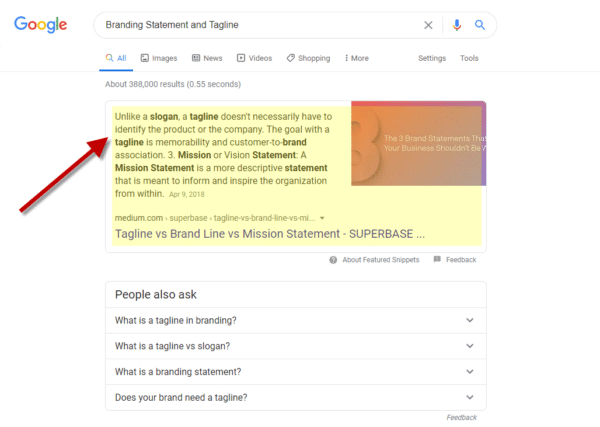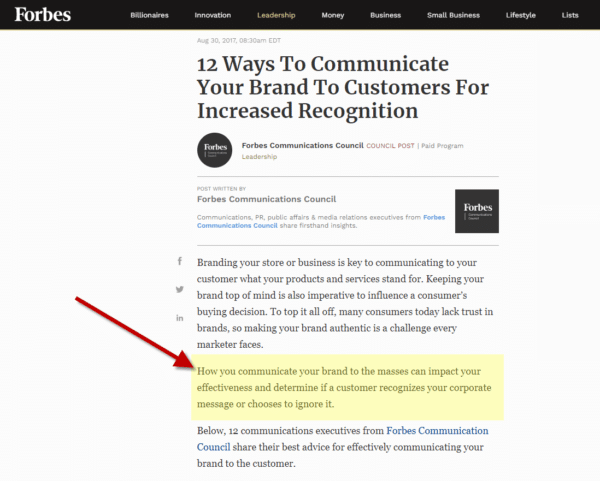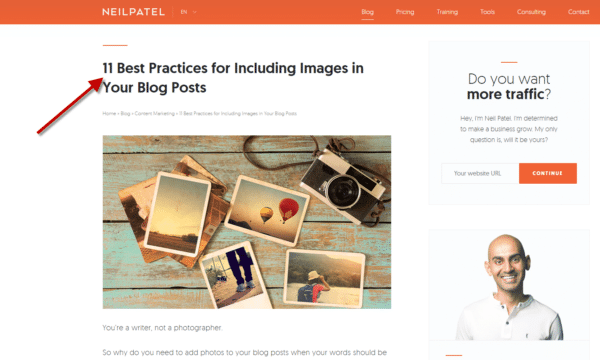Whatever you’re doing in business, whether it’s building a following, creating engagement with your content, or selling directly, you need a strong personal brand to do it. Your customers want to buy and follow from a trusted friend and expert.
What is a personal brand? A personal brand is the perception or impression your audience has of you based on your unique combination of skills, experience, and actions within your community, industry and market. It is the telling of your story, and how it reflects your behavior, spoken and unspoken words, and attitudes.
People buy from brands and follow brands that have taken the conscious effort to build confidence and trust with their audience.
As Jeff Bezos puts it, “Your brand is what other people say about you when you’re not in the room.”
Your personal brand serves several functions:
- It tells people who you are and sets expectations. It helps people understand your values and who you are.
- It’s the face of your company or online presence. Branding gives you authenticity and shows that you’re legitimate.
- It defines your reputation.
- Your personal brand sets you apart from other businesses in your niche.
If you have online or public presence, it’s already setting these expectations and creating a reputation for you. As soon as you create a social media profile or publish a blog post, you’re branding yourself unconsciously.
Knowing this, let’s get ahead of it and get organized! And that’s exactly what you’ll start doing as you work your way through this post, and it only takes a few simple steps.
Step 1: Identify Who You Serve
To brand yourself successfully, you need to know who it is you serve. Who is your audience? Who is your Avatar?
According to the folks at keap, you can define your customer avatar by defining these 6-traits (I’ve added my spin on a few).
- Demographic traits: This includes age, income level, education, marital status and family size.
- Psychographic traits: This may be a tad harder and take a little pondering. The psychographic traits include their attitude, interest and lifestyle.
- Name your avatar: I know this sounds weird, but it WORKS! Giving your avatar a name brings a genuine sense of identity to them. It makes them come alive. In case your wondering, my avatar’s name is Ron :).
- Put a face to their name: Finding a picture takes the “naming” process a step further. When you give them a name, they take on a character. When you give them a picture, they come alive!
- Design a dossier: The dossier is where you bring everything together. It’s a one-page statement of who your avatar is.
- Speaking of story: Last step is to imagine a story using your avatar. Imagine they’re driving to work thinking about what their day holds. Are they happy and content? Or are they sad and depressed looking for a way out? What are they hoping to solve? What’s their dream?
People follow others online because they relate to them. They feel a personal connection.
Your audience needs to feel connected to you. To make this important link, you need to know as much about your audience as possible.
Remember, it’s essential to know demographic information such as their age range, geographic location, and socioeconomic status.
And just as important, if not more, you need to know about their values and behaviors.
If you understand your audience’s core values and tastes, so you can appeal to them to create a strong relationship.
Pay close attention to your audience’s needs, problems, and questions. Look for specific issues you can help them with. Try to find out what’s troubling them most so you can offer solutions.
When identifying your audience/avatar, be as specific as possible. Even if your values and solutions appeal to a wide variety of people, you could risk spreading yourself too thin.
Defining your audience and specifically your avatar will help you stay on track.
If you can identify a very specific target audience, you can communicate directly with them. This will be the best use of your time and effort, rather than casting your net wide and appealing to those who only vaguely share your values.
You must create an authentic connection with your audience, so these should be “your people.”
Step 2: Define Your Brand Identity
Every brand has its own identity and language.
In order for branding to work, it has to be consistent. Everywhere your audience sees you online, they should know it’s you and your content should give the same impression.
I love the way 99design puts it, “Just like your personal identity makes you uniquely you, your brand identity is the special sauce of your business that sets you apart from every other Tom, Dick and Harry, Inc. on the block. And your brand identity design? It’s what shapes your company.”
You need to define these elements to ensure consistency wherever your audience encounters you.
Branding Statement and Tagline
If you search Google for “Branding Statement and Tagline” you’ll get a good explanation.
Superbase describes a branding statement and tagline as:
“Unlike a slogan, a tagline doesn’t necessarily have to identify the product or the company. The goal with a tagline is memorability and customer-to-brand association.”
Tagline vs Brand Line vs Mission Statement
You should craft a simple statement and tagline that defines your personal brand. You can use this tagline as a quick summary in your marketing.
For example, our tagline at Topic Flip is, “Helping you discover our 10% edge.”
Everyone wants an edge up on their competition, success, wealth, you name it. That’s what we do. Help them find their edge.
Your statement tells people in simple language what you do, and why you do it.
The tagline takes this statement and turns it into a brief sentence that people can see and, at a glance, immediately understand whether what you offer is for them.
It takes some time and consideration to craft a good statement and tagline. Here are some ideas to help you brainstorm:
- How do you work with your customer?
- Why do you do what you do?
- How is what you do unique from others?
- How do you help people solve their problems?
Your tagline should be:
- Unique
- Bold and memorable
- Authentic
- So simple that a child could understand what it means
Design and Visual Identity
You should choose specific design features and visuals that will communicate your personal brand image to your audience.
Elements of an excellent brand design include:
- Color Palette. Choose a few colors that resonate with your audience and the image you’re going for. You can get ideas by looking at similar businesses in your niche. Certain industries use certain color schemes.
- Font. Pick a few fonts that you’ll use for headlines and text in your written materials. Make sure the fonts work well together and don’t clash.
- Logo. Create a logo for your brand if you don’t already have one.
- Headshot. Choose an excellent picture of yourself for your website, social media profiles, and other branded materials.
These design elements will immediately let your audience know it’s you when they encounter you anywhere, online or off.
Tone
Your written content should have a consistent tone and voice. Things to consider include:
- How formal or casual you’d like to be
- Level of reading difficulty
- Guidelines for slang usage
- Words to use or not use
- Type of humor
All the above should match the tastes of your audience and be natural for you.
It’s an excellent idea to create a style guide that sets down guidelines for your tone and how you write.
You can also use this guide if you outsource your content creation or other communication-related tasks. I’ve found this valuable when outsourcing content creation.
Step 3: Create Content That Expresses Your Personal Brand
When I think of brand building, I love visiting the blog over at Rebrandly.
Content plays several important roles in your personal branding:
- Build Trust. Consistent, helpful content builds a relationship with your audience where they trust you to help them.
- Demonstrate Authority. The material you put online shows your authority in your niche. It gives you a chance to showcase your skills and expertise.
- Gain Exposure. Your articles, videos, social media posts, and other work helps to bring people into your sphere.
- Generate Leads. Content can be used as part of your marketing funnel to generate quality leads.
Create content that will attract the audience you identified earlier.
Identify common problems you solve for your customers, and address these in your articles, blog posts, and videos. Give your audience what they’re searching for. Answer their questions and ease their fears.
The content you create should be consistent with the tone and design elements you identified in Step-2.
Here are some ideas on the content you can create:
- Focus on times when you’ve gotten results for a customer or client. How did you do this? Write a blog post or article that addresses this problem and offers a solution you know works.
- Create something that showcases a person you’ve helped. This could be a case study or testimonial. It offers help but also shows your expertise in action and includes a personal element.
- Think of ways you can teach your audience things you know. Go beyond articles or videos and create webinars that address specific problems, or courses that teach how to do something step-by-step.
- Tell your story. Create a piece that explains how you came to do what you do. A good story arc is to start with a problem you faced and explain how you solved this problem and learned how to help others.
- Go for an emotional connection by making your content personal. Be authentic and interact with your audience directly.
- Post new content regularly. Your audience will come to expect a weekly blog post, a bi-weekly podcast, a daily Facebook post or email, etc. Consistency is important for branding, so be consistent with your publishing schedule.
- Focus solely on offering value and helping people with your content without asking for anything in return. Don’t promote.
When planning and creating content, always keep in mind your personal branding goals and make sure the material you make helps you achieve these goals.
Step 4: Communicate Your Brand Message
Forbes offers us a great summary when thinking about communicating our brand message.
Simply put, “How you communicate your brand to the masses can impact your effectiveness and determine if a customer recognizes your corporate message or chooses to ignore it.”
Where and how you publish your content should depend on two variables:
- Your audience’s tastes
- Your capacity to publish
Through getting to know your target market, you’ll discover what media they prefer and how often they’d like new content.
You also must consider your capacity to publish. You don’t want to overextend your content creation abilities.
Spread the Word on Social Media
Social media is an essential tool for spreading your personal brand. Build an engaged audience on social media sites like Facebook and Twitter and get to know your audience well.
Interact with them personally and use the platform to let them know whenever you’ve published something new.
Personal Branding Through Your Blog
Whatever content strategy you decide upon, you need to at least have a blog.
A blog allows you to publish regular articles for your audience. It gives them a place to engage with you through the comments section.
One of the major benefits of blogging is that the fresh content helps to attract new customers through search engines.
Don’t Forget Multimedia
Go beyond blog posts and articles, and consider publishing audio, video, and visual content. People love multimedia content and it attracts a wider audience who enjoys unique types of content.
Neil Patel even has an entire post on 11 Best Practices for Including Images in Your Blog Posts.
In the post, Neil explains the advantages and best use for using images in your articles.
- Break up the text. Images offer a way for our mind to process what we’re reading by breaking up the text into chucks.
- Use clear images. Your images need to be clear and crisp. Fuzzy images look unprofessional and can hurt your personal brand.
- Use legal images. This should be clear. Don’t steal and give credit where credit is due. Thanks, Neil!
- Incorporate screenshots. People love to be shown how to do stuff and screenshots are great for doing this.
- Use explainer images. Similar to screenshots, but adds some arrows and explanation to help.
- Use SEO tactics. Don’t forget to add your ALT tags to your images. Always be thinking SEO.
- Include pictures of people. We love seeing people. Especially their eyes.
- Optimize large images. If you use enormous images, it may slow down your page load times. You can use tools like TinyPNG to compress your images.
- Use images frequently. The rule-of-thumb is to have an image for every 150 words.
- Create your own images. If you’re up for it, creating your own images can help add your personal brand.
- Determine the ideal size of your images. Know what sizes need to be in a post. You may add an image that is 2000 x 2000 pixels when it only needs to be 300 x 300 pixels.
Expand Your Audience Reach as a Guest
Appear in the content of other creators to expand your audience. Write guest posts and submit them to other sites.
Get interviewed by other people with personal brands both on blogs and podcasts.
This gives you a chance to share your expertise but also helps you reach fresh audiences.
Publish Books to Establish Your Expertise
An impressive way to establish your authority and become known for your expertise is to self-publish books in your niche.
This not only gives you another avenue for publishing content but also adds to your reputation because you’re a published author.
In conclusion, the best way to make your personal brand work for you is to approach it methodically.
Decide who you want to reach and what image you’d like to present, then create the content and post it where your audience will discover it.

